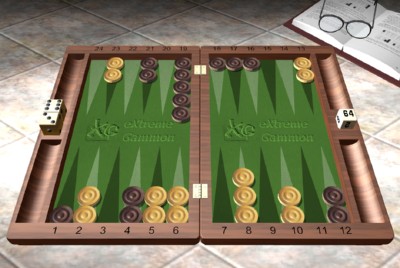Cash game, center cube.

Should White double? If he doubles, should Black take or drop?
This position shows a pretty interesting middle game position. Both sides have an anchor, and some points scattered around. White, however, is on roll and shooting at a bunch of blots. He has a total of 27 hits: all sixes, all fives, 4-3, 4-1. 3-2, and 3-3. That’s a lot of hits, so he’s naturally thinking about doubling, and Black is probably worrying whether or not he’ll have a take if White ships the cube.
I like to call these positions “Action Doubles”, because there’s a big equity swing when White hits one of his shots. If he hits, Black could be forced into some sort of back game/holding game; if he misses, Black’s blots all become builders and he’s in decent shape.
Let’s start by evaluating the double according to Sylvester’s Law: we’ll look at the position, the race, and the threats.
(1) Positional advantage. Both sides have an anchor, although Black’s anchor is superior. White’s extra inner-board point is offset by the fact that it’s behind Black’s anchor. White has the outline of a blockade, while Black is hampered by the stack on his 6-point. Slight edge to White.
(2) The race. White leads by 12 pips, 142 to 154. Given the amount of contact in the position, a 12-pip lead isn’t a big deal at this stage.
(3) Threats. White is shooting at three blots and most of his rolls hit. Big edge to White.
White has a big advantage in threats and small advantages in position and the race, so the double looks pretty solid. Now let’s consider the take.
In action doubles, most of the take decision hinges on whether the defender has an anchor or not. If he does, it’s usually a take; if not, it’s likely to be a pass. Here Black has a very good anchor, while in addition White’s board isn’t that strong. These two factors suggest it’s a take, and in fact that’s right. Passing here is a big blunder, costing Black almost 0.3 points/game. The most likely sequence on the next roll is that White hits one blot and Black then reenters, after which most of Black’s troubles have subsided. He’s down in the race, but he’s holding a great anchor and maybe one other point as well, while White still has to bring his men around the board.
Don’t be afraid to take just because your opponent is likely to hit a blot. If you have an anchor, your checkers are all in play, and the game rates to go on for awhile, it’s not likely your opponent is a 3-1 favorite yet. Take the cube and make him win the game.





